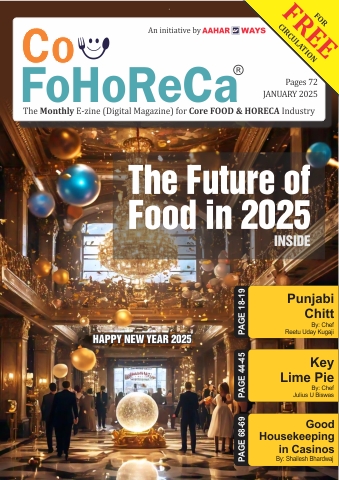AI-Powered Robotic Waiters: Efficiency or Overkill?
Whether efficiency or overkill, robotic waiters are undoubtedly reshaping how we think about service in the modern dining landscape.
The introduction of AI-powered robotic waiters in the
restaurant industry has sparked widespread debate about their role in
transforming dining experiences. While the concept of robots serving food once
seemed like a futuristic dream, it has rapidly become a reality in many
establishments worldwide. Proponents highlight the efficiency, novelty, and
operational benefits these robotic waiters bring, while skeptics question
whether they offer a meaningful improvement over human service or risk
detracting from the personal touch diners value. This divide raises an
important question: are robotic waiters a smart investment for modern
restaurants, or are they an over-engineered solution to existing
challenges?
One of the most compelling arguments for AI-powered robotic waiters is their potential to enhance operational efficiency. These machines can streamline tasks such as delivering orders, clearing tables, and even taking payments, freeing human staff to focus on more complex or customer-focused duties. Unlike human workers, robots do not tire, require breaks, or call in sick, making them a reliable addition to the team. In high-volume restaurants or during peak hours, robotic waiters can reduce wait times and ensure smoother service flow, improving customer satisfaction. Additionally, their precision in following programmed routes minimizes errors, further enhancing the overall dining experience.
The novelty factor of robotic waiters also serves as a significant draw for tech-savvy diners. Restaurants that implement such technologies often create a buzz, attracting curious customers eager to see these futuristic servers in action. This appeal can set establishments apart in competitive markets, offering a unique selling point that draws foot traffic and generates publicity. In many cases, the mere presence of robotic waiters turns dining into an interactive experience, with customers enthusiastically sharing photos and videos on social media, amplifying the restaurant’s reach and reputation.
Despite these advantages, critics argue that robotic waiters risk eroding the personal connection that is central to exceptional hospitality. A warm smile, a friendly conversation, or the ability to intuitively cater to a customer’s needs are elements that machines, no matter how advanced, cannot replicate. Dining is often about more than just the food—it is an experience shaped by human interactions. For many patrons, the charm of a personable waiter who remembers their favorite dish or recommends a new item from the menu adds immeasurable value to their visit. Robotic waiters, with their programmed functionality, may struggle to provide this level of service, leaving some customers feeling disconnected.
The cost and maintenance of robotic waiters also raise concerns about their practicality for many restaurants. The initial investment in acquiring these machines can be substantial, particularly for small or medium-sized establishments. Ongoing expenses, such as software updates, repairs, and technical support, can further strain budgets. Additionally, the deployment of robots may require significant changes to a restaurant’s layout and workflow, creating logistical challenges that not all businesses are equipped to handle. For restaurants in regions with abundant and affordable labor, the financial outlay may outweigh the perceived benefits, making robotic waiters an unnecessary extravagance.
Furthermore, the integration of robotic waiters highlights broader ethical and societal implications. The potential displacement of human workers has fueled concerns about job losses in an industry already heavily affected by economic pressures. While robots can handle repetitive tasks, their adoption may contribute to a perception of the hospitality sector becoming overly mechanized, potentially alienating both workers and customers. Striking a balance between leveraging technology and preserving employment opportunities is a challenge that restaurant owners must navigate carefully to avoid negative public sentiment.
Ultimately, the question of whether AI-powered robotic waiters represent efficiency or overkill depends on the context in which they are used. For high-tech, fast-paced, or novelty-driven dining environments, robotic waiters can offer a distinct advantage, aligning with the brand's identity and customer expectations. In contrast, for restaurants that prioritize warmth, tradition, and personalized service, human waitstaff remain irreplaceable. The decision to embrace robotic waiters must be guided by a clear understanding of the restaurant’s goals, customer base, and operational needs.
As technology continues to advance, the debate surrounding robotic waiters will likely persist. While they may not replace human interaction entirely, their role as supplemental support in the restaurant industry seems poised to grow. Whether efficiency or overkill, robotic waiters are undoubtedly reshaping how we think about service in the modern dining landscape.
.png)



























